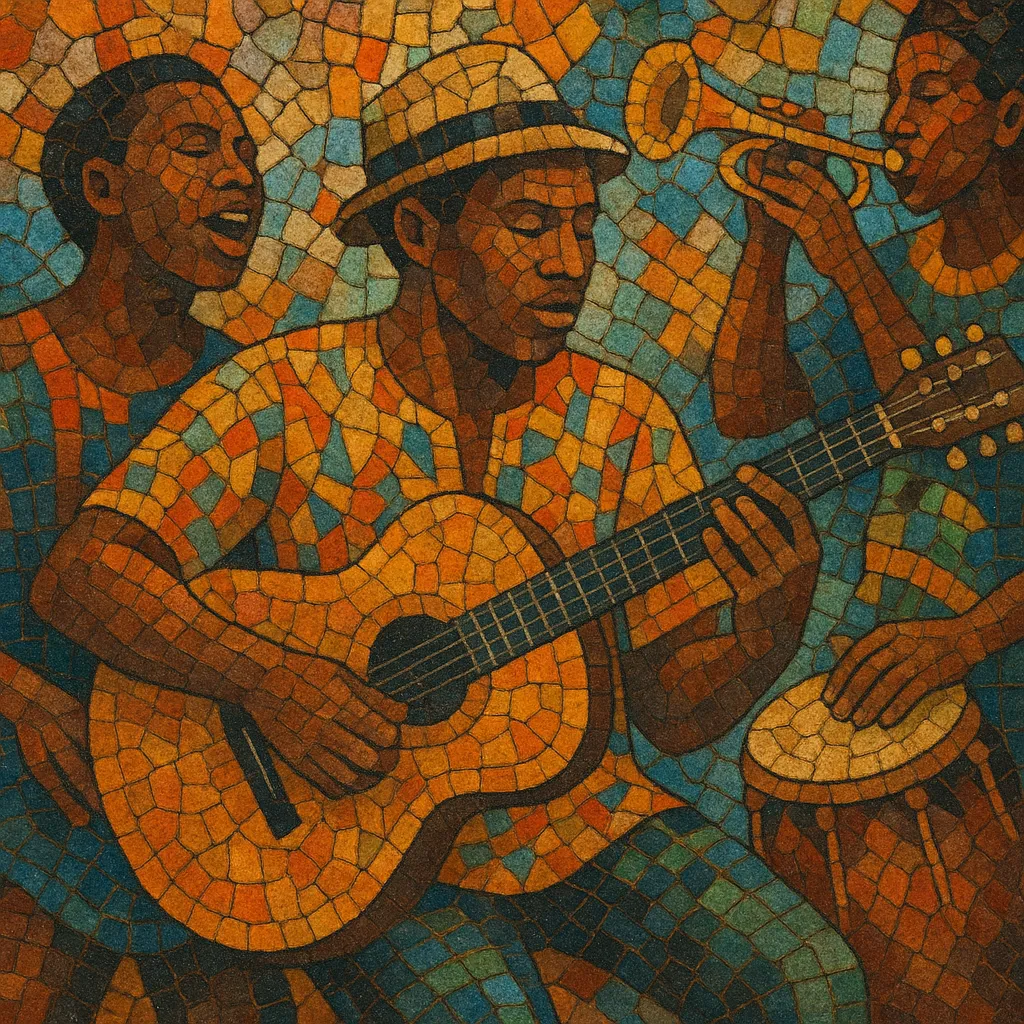Ziglibithy is a guitar-driven popular dance music from Côte d’Ivoire created and named by Ernesto Djédjé in the 1970s. It fuses traditional Bété rhythms and call‑and‑response vocals with the sleek, interlocking guitar lines and rolling bass of Congolese rumba/soukous and the brass/arrangement sensibilities of West African highlife.
Typically fast and bright, ziglibithy emphasizes continuous, bubbling lead guitar riffs (akin to the soukous sebene), tight rhythm-guitar ostinatos, propulsive percussion with cowbell, and exuberant choral refrains. Lyrics are often sung in Bété (alongside French or Nouchi), celebrating social life, dance, love, and local identity. The result is an uplifting, highly danceable style that helped define modern Ivorian popular music.
Ernesto Djédjé, after early stints in Ivorian pop groups, crystallized a new sound in Abidjan by blending Bété rhythms and vocal practices with the guitar fluency of Congolese rumba/soukous and the arrangement polish of highlife. He named this personal synthesis “ziglibithy,” crafting a signature identity for modern Ivorian dance music. Early singles and albums established the hallmarks of the style: bright tempos, circular guitar figures, emphatic cowbell, and communal choruses.
Throughout the late 1970s and into the early 1980s, Djédjé’s recordings and energetic stage shows made ziglibithy a fixture of Ivorian nightlife and radio. Backing ensembles refined the interplay between lead and rhythm guitars, while bass and percussion sections amplified the propulsive, celebratory feel. The style’s bilingual and locally rooted lyrics helped connect urban audiences with regional traditions in a modern pop format.
Djédjé’s untimely death in 1983 curtailed ziglibithy’s first wave, but the sound’s elements—nimble guitars, call‑and‑response hooks, and localized storytelling—became part of the DNA of Ivorian pop. Subsequent scenes and styles such as zouglou and zoblazo, and eventually the cosmopolitan club‑leaning currents that fed into coupé‑décalé, inherited ziglibithy’s emphasis on participatory dance energy, catchy refrains, and a proudly Ivorian musical identity.


